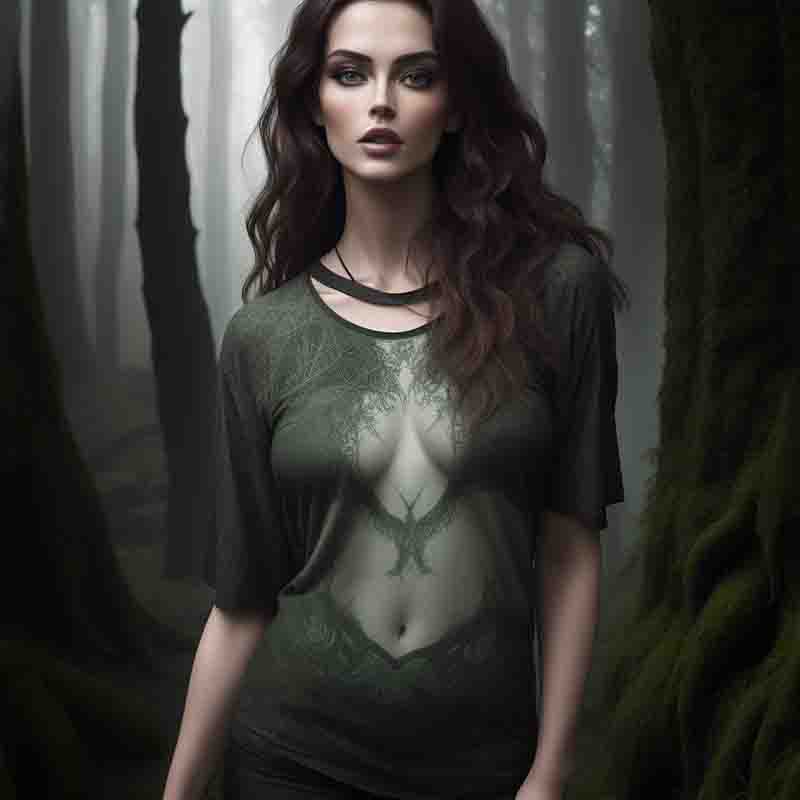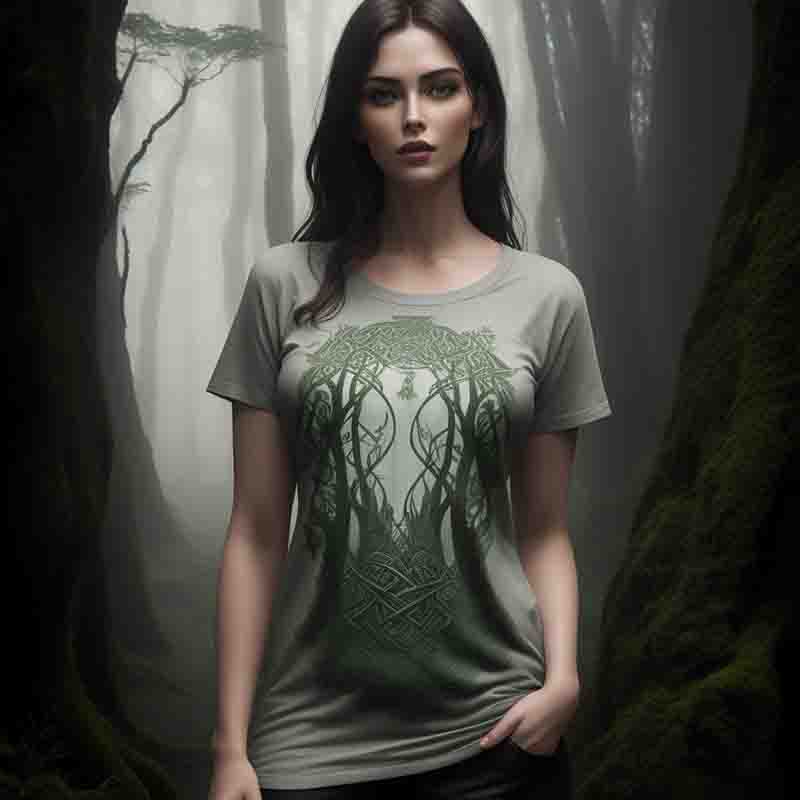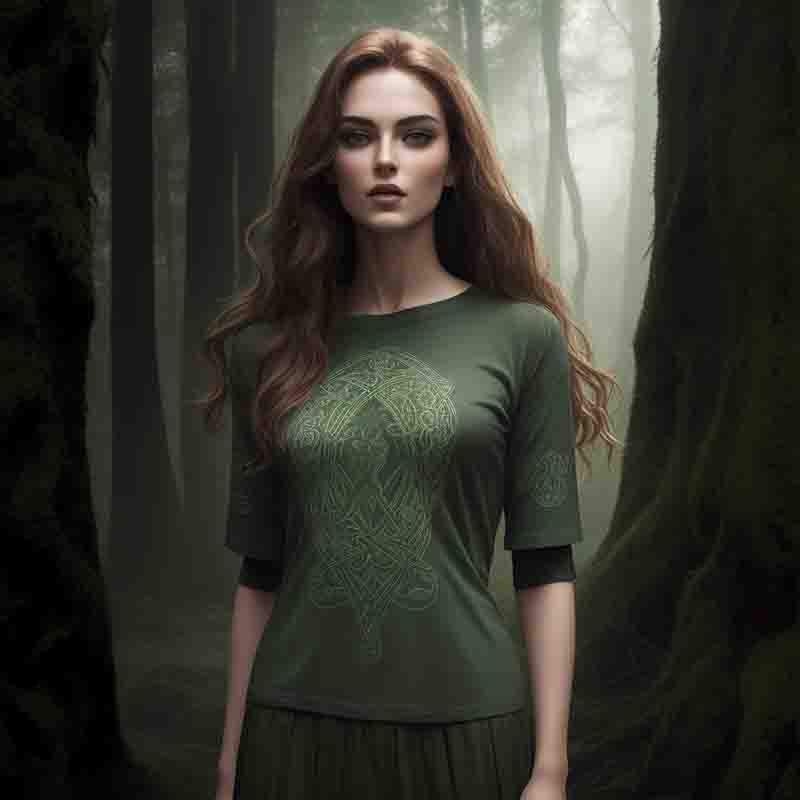Transform Your Wardrobe with Authentic Celtic Fashion
Celtic fashion is a blend of history, culture and symbolism. At its core, it is a reflection of the Celtic spirit, a unique fusion of the functional and the artistic. Celtic garments deal with intricate attention to detail and the cultural significance of iconic features and elements.

Celtic fashion continues to enchant with its elegance, individuality, and connection to the ancient Celtic spirit.
Celtic fashion provides a showcase for self-expression. Wearers can incorporate their personal style and sense of ethnic identity into their clothing, creating a unique look that reflects individuality and an appreciation for Celtic heritage and culture.
The elegance and symbolism of Celtic fashion often inspire artists and writers. Paintings, illustrations, and literary descriptions of characters wearing Celtic attire serve as testaments to the enduring appeal of this fashion genre.
The timeless motifs and intricate Celtic patterns on textiles have deep underlying ingrained cultural significance, which is also reflected in Celtic jewelry design.
They are not just pieces of clothing, but strongly reflect the respect for nature often represented in symbols such as the Celtic wheel portraying a strong sense of Celtic identity.
While traditional Celtic garments have deep historical roots, they continue to be relevant in the modern world.
The Celtic fashion genre beautifully blends the past and present, presenting a rich stylistic palette of patterns and designs.
Celtic fashion incorporates elements such as traditional Celtic knotwork, tartan patterns, earthy colors, and natural materials. It combines historical and contemporary elements to create clothing and accessories that celebrate the intricate, timeless, and symbolic designs associated with Celtic art and culture.
Timeline line of Celtic Fashion
| Time Period | Key Developments | |
|---|---|---|
| Prehistoric Era: 500 BC | Early Celtic clothing features simple, woven garments made from natural materials like wool and linen | |
| Iron Age: 500 BC to 43 AD | Introduction of brooches, fibulae, and torcs as decorative and functional elements | |
| 43 AD to 410 AD: Roman Influence | Celtic attire is influenced by Roman fashion, adopting elements like tunics and togas. | |
| Early Medieval Period: 5th to 10th century | Emergence of distinctive Celtic styles with patterned textiles and simple jewelry | |
| Viking Era: 8th to 11th century | Celtic fashion influenced by Viking designs, featuring intricate metalwork and colorful garments | |
| High Middle Ages: 11th to 15th century | The development of the kilt in Scotland and the evolution of intricate knotwork patterns | |
| Renaissance: 15th to 17th century | Renaissance fashion impacts Celtic attire, incorporating lace, ruffles, and more ornate designs | |
| Victorian Era: 19th century | Revival of interest in Celtic culture leads to a resurgence of traditional Celtic designs in clothing | |
| 20th Century Revival | Renewed interest in Celtic fashion, particularly in Celtic jewelry and tartan patterns | |
| Contemporary Celtic Fashion | A fusion of traditional Celtic elements with modern styles, influencing a wide range of clothing, jewelry, and accessories. The Celtic fashion industry expands globally |
The evolution of Celtic fashion is a captivating journey through time, filled with influences from various cultures, periods, and regions.
Celtic Roots in Modern Fashion: Blending Tradition and Trend

Celtic fashion, rooted in history and symbolism, has found its place in the modern world by seamlessly adapting traditional elements to contemporary trends.
Celti fashion prints are often bold and vibrant, making a statement without losing the essence of tradition.
Clothing with Celtic-inspired prints has become a staple in modern wardrobes. This trend extends to both casual and formal wear
Celtic fashion's adaptability and timelessness are evident in its effortless transition into modern trends, it is a diverse and versatile genre that offers a wide range of styles, from formal wear to casual attire.
Well-Known Celtic Fashion Brands:
-
Aran Sweater Market: A renowned brand hailing from Ireland, the Aran Sweater Market is famous for its authentic Aran sweaters. These sweaters are characterized by intricate knit patterns that represent the heritage and traditions of the Aran Islands.
-
Celtic & Co.: Based in Cornwall, England, Celtic & Co. offers a wide range of Celtic-inspired clothing and accessories. Their collections include sheepskin boots, knitwear, and stylish outerwear.
-
Edinburgh Woollen Mill: Known for its Scottish heritage, the Edinburgh Woollen Mill features traditional and contemporary Scottish and Celtic clothing. This brand offers everything from kilts and tartan scarves to modern Celtic-themed attire.
-
The Irish Store: This brand brings together the finest Irish goods, including Celtic clothing, jewelry, and homeware. Their clothing line includes traditional Irish sweaters, capes, and Celtic-themed accessories.
-
Hibernian: Hibernian is a Scottish brand that combines Celtic traditions with modern fashion. Their range includes kilts, tartan clothing, and accessories with a contemporary twist.
Emerging Celtic Fashion Brands:
-
Isle & Eden: This emerging brand specializes in modern Celtic fashion. Their collections feature sleek Celtic knotwork patterns on clothing, including dresses, tops, and accessories.
-
Thistle & Knot: Thistle & Knot is gaining recognition for its Celtic-inspired jewelry. They offer a unique blend of traditional and modern designs, with pieces like Celtic knot necklaces and earrings.
-
Cloth of the Brotherhood: An emerging brand from Wales, Cloth of the Brotherhood is dedicated to creating modern Celtic clothing that embraces heritage and sustainable practices. Their designs include Celtic-themed dresses and sustainable accessories.
-
Emerald Isle Jewelry: This brand specializes in Celtic jewelry that draws inspiration from Ireland's rich heritage. They offer a wide range of Celtic rings, bracelets, and necklaces with traditional and contemporary designs.
-
Celtic Fusion Design: Based in Canada, Celtic Fusion Design creates clothing and accessories that merge Celtic heritage with global fashion influences. Their collections include kilts, capes, and contemporary Celtic prints.
These brands, both well-known and emerging, reflect the diversity and adaptability of Celtic fashion.
Whether you're looking for traditional Celtic clothing or modern interpretations, these brands offer a wide range of styles that celebrate Celtic heritage in their own unique ways.
Celtic-Printed Apparel

Celtic fashion is distinguished by its intricate knotwork and interlacing patterns, symbolic motifs of animals and nature, Celtic crosses, a distinctive color palette, embroidery and embellishments, and tartan patterns.
Celtic fashion, deeply rooted in tradition and symbolism, has made a notable impact on both runway haute couture and everyday street styles.
Its influence has been seen in various aspects of contemporary fashion.
Contemporary fashion designers have successfully blended Celtic elements with sleek silhouettes and luxurious materials, creating a harmonious balance between the old and the new.
Celtic street fashion incorporates Celtic prints and patterns into clothing, including T-shirts, dresses, adding a touch of cultural flair to casual attire..
Celtic Fashion: Decoding Elegance and Heritage
In recent years, Celtic fashion has experienced a remarkable resurgence, capturing the hearts of individuals worldwide.
This resurgence is more than just a fleeting trend; it is a reflection of a profound cultural revival and the enduring appeal of Celtic attire.
Celtic fashion is rooted in history, rich in symbolism and deeply connected to the natural landscapes of the Celtic regions. It tells a compelling story that passes the test of time.
Historical Evolution of Celtic Fashion
Celtic attire has a fascinating historical journey that reflects the cultural and social changes in Celtic societies over the centuries.
In ancient Celtic societies, clothing was largely utilitarian, with men wearing tunics, trousers, and cloaks, while women donned long dresses and skirts.
As time progressed into the medieval period, the evolution of Celtic fashion became more evident.
Kilts, now iconic in Scottish heritage, became a defining garment. The leine, a knee-length shirt, was widely worn.
Additionally, ornate brooches and jewelry played a significant role in defining Celtic fashion.
These historical elements continue to influence contemporary Celtic attire, preserving the connection to the past while celebrating the present.
Key Elements of Celtic Fashion
Celtic fashion is defined by several key elements that set it apart from other styles.
These intricate designs carry deep meanings and reflect the interconnectedness of life.
Natural materials like wool, linen, and leather are central to Celtic attire, connecting wearers to the natural world and emphasizing sustainability
The earthy color palette used in Celtic fashion, including greens, browns, and blues, reflects the lush landscapes of Celtic regions and creates a connection to nature.
Adapting Celtic Fashion to Modern Styles

Celtic fashion is versatile, accommodating different seasons and weather conditions.
While rooted in tradition, Celtic fashion seamlessly adapts to modern styles.
Many individuals embrace contemporary fusion, combining Celtic elements with everyday clothing to create a unique and personal style.
This adaptability extends to both formal and casual attire, making Celtic fashion accessible for various occasions.
From weddings to casual outings, Celtic fashion allows for individual expression within the framework of tradition.
Threads of Tradition: Materials in Celtic Fashion
Traditional Celtic clothing, influenced by the environment and climate of the Celtic regions, typically features fabrics like wool and linen.
These materials not only offer practicality but also hold cultural and historical significance. Let's explore the materials commonly used in Celtic fashion.
-
Wool: Wool is a quintessential material in Celtic fashion, celebrated for its warmth and versatility. The Celtic people have a long history of sheep farming, making wool readily available
-
Linen: Linen is another material with historical significance in Celtic fashion. It's made from the flax plant and is known for its breathability and lightness.
-
Tweed: Tweed is a rugged and coarse fabric with a distinctive appearance, typically used for outerwear. Tweed, with its sturdy and weather-resistant qualities, can be produced using sustainable methods.
-
Leather: Leather is a material used in Celtic fashion primarily for accessories like belts, pouches, and footwear.
Materials in Celtic fashion, such as wool and linen, are chosen for their practicality, cultural significance, and historical roots.
These fabrics not only provide comfort and protection against the Celtic climate but also celebrate the heritage and craftsmanship of the Celtic people.
The choice of materials in Celtic fashion is a testament to the deep connection between clothing and culture.
Embracing the Celtic Elegance
Through Celtic fashion, the culture's symbols, natural connections, and traditions are preserved and proudly displayed, allowing wearers to be both rooted in the past and firmly planted in the present.
Celtic fashion is not just a style choice; it's a journey through time, a celebration of culture, and an embodiment of enduring elegance.
From its ancient origins to its contemporary adaptations, Celtic fashion continues to capture the hearts of individuals who appreciate its beauty and cultural significance.
Celtic Fashion: FAQ
Are you curious about music, art, technology, fashion, lifestyle, and beer?
If so, then you need to subscribe to the free Likewolf newsletter.
100% privacy. When you sign up, we'll keep you posted.
Timeless Celtic Jewelry
From rings to necklaces and bracelets
